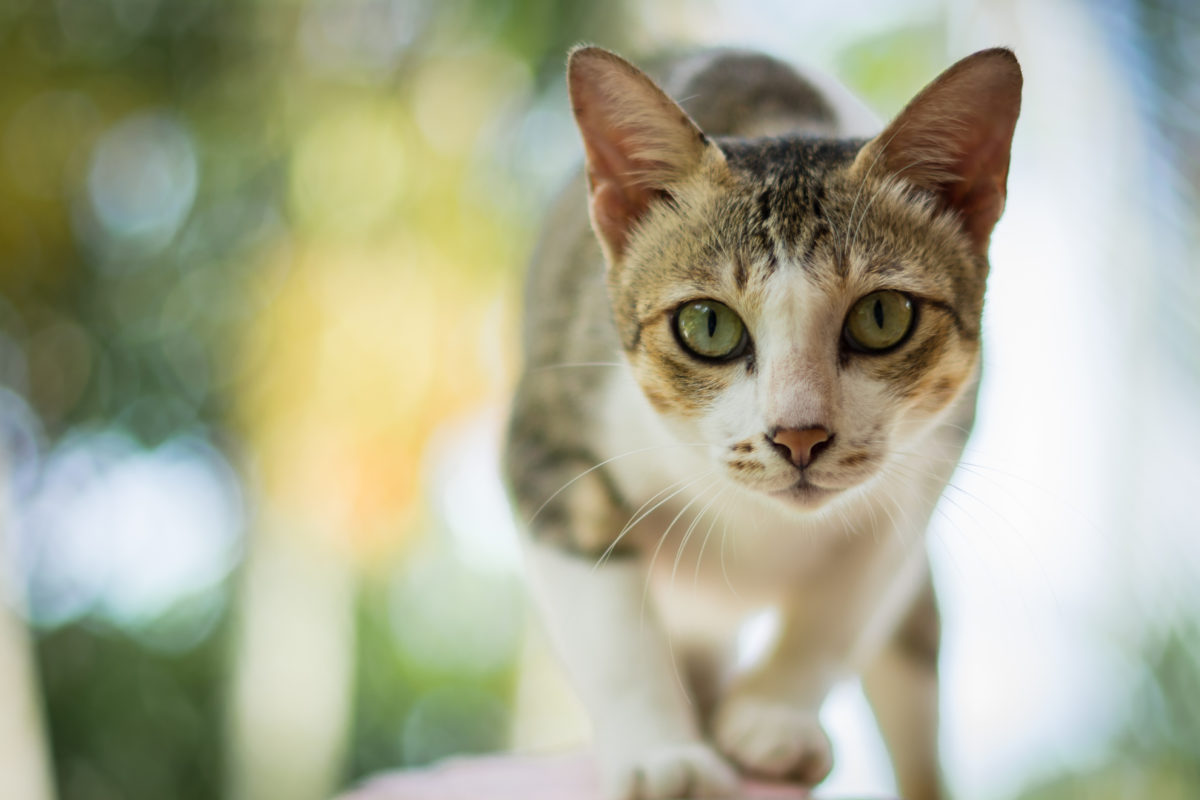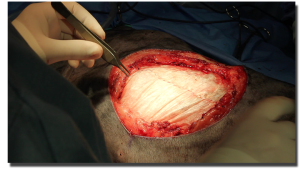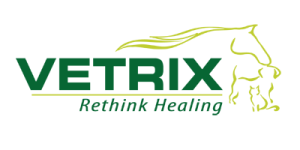Vetrix BioSIS for Animal Soft Tissue Repair
Our BioSIS technology acts as a biological scaffold for revolutionized animal soft tissue repair. That means veterinary patients can experience faster healing and organized tissue regrowth in the damaged area. It’s changing the way veterinarians all over the world are treating seriously wounded patients. Keep reading for more information on BioSIS—as well as getting the best results possible when dealing with animal soft tissue repair.
Uses for BioSIS in Animal Soft Tissue Repair
The uses for Vetrix BioSIS run the gamut of site-specific healing. What sets it apart as a biomaterial? It provides a natural structure that supports and encourages the body’s natural healing process instead of hindering it with foreign material.
BioSIS, and the surrounding tissue it connects to, allow the cells to migrate, separate, and differentiate within the matrix. This means your patient receives site-specific healing with the ideal biomaterial for tissue remodeling.
Common surgical applications for Vetrix BioSIS include gastrointestinal soft tissue repair, thoracic wall repair, body wall and hernia repair, degloving injuries, mass removals, and as a skin graft alternative.
When veterinary professionals think of the ideal material for hernia repair, BioSIS checks all the boxes. This technology is inexpensive, technically easy-to-use, and promotes host tissue ingrowth. Your patient receives a healed repair with strength equal to their natural tissue, resistance to infection, and no enhanced inflammatory response.
Getting the Best Results With Vetrix BioSIS
As veterinary professionals, we all want the absolute best for our patients. That means fast healing, minimal discomfort, and as few complications as possible. Here are some expert tips for getting the best results possible when it comes to animal soft tissue repair and Vetrix BioSIS.
The Horizontal Mattress Technique
By connecting to several points of blood supply, the horizontal mattress technique encourages ample blood flow to the wound, which is crucial to finding success with BioSIS.
Perforate the BioSIS Scaffold
When it comes to larger wounds, avoiding inflammation is of the utmost importance. That’s why fenestration may be necessary. If it is, it will keep cells and other fluids from gathering between the healing tissue and the BioSIS scaffold. Blood flow is extremely important, which is why dried blood is a common concern when dealing with animal soft tissue repair.
Change Bandages Carefully
During the healing process, the BioSIS graft will not be absorbed by the patient’s new tissue all at once. When changing bandages, you’ll want to be as careful as possible not to disrupt the matrix. Using a non-adherent bandage can help with this, making changing the bandage much easier. Within the first 10 days of recovery, do not clean the wound or scrape off its pigment—this can disrupt the healing. Instead, irrigate the wound with saline and apply a new bandage.
Wound Site Mobility
As mentioned above, blood flow is extremely important in the recovery of animal soft tissue repair. Allowing for mobility at the wound site is a great way to encourage blood flow during the healing process. In fact, we’ve found through our own research that mobility noticeably increases how quickly the wound heals. While still covering all of the wound site, try to allow for as much mobility as possible when bandaging.
Have Questions about BioSIS? We Have Answers.
Whether you have further questions about how to use Vetrix BioSIS in your veterinary practice or you’d like to share a success story, we’d love to hear from you. Click here to send us a message, and we’ll get back to you shortly. We look forward to serving you!



